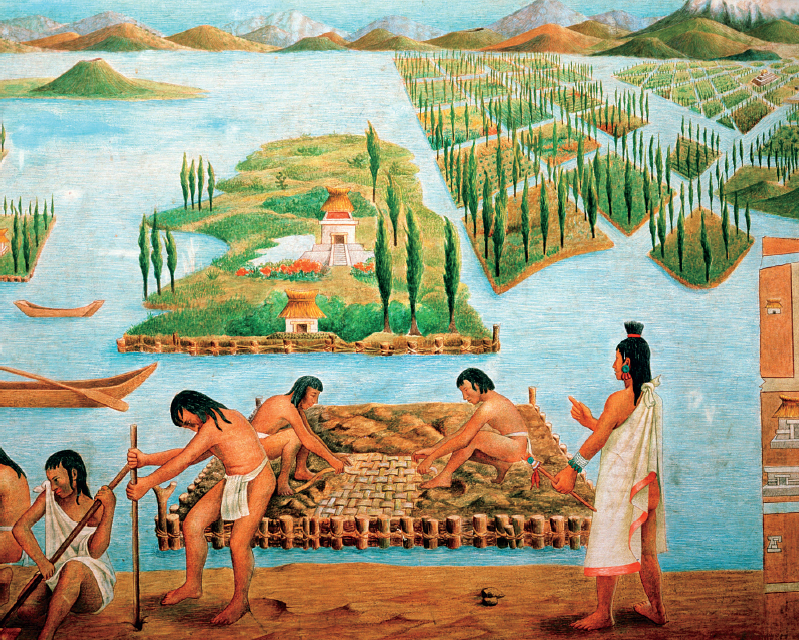Understanding World Societies:
Printed Page 314
The Mexica: From Vassals to Masters
In the early fourteenth century, the Mexica, a migrant, seminomadic group, arrived in the Valley of Mexico. They found an environment that, since the collapse of the Toltec Empire in the twelfth century, had divided into small, fragile alliances that battled to claim the legacy of the Toltecs. At the moment of their arrival, control over much of the valley lay in the hands of the Tepanec Alliance. The Mexica negotiated the right to settle on a swampy island on Lake Texcoco in exchange for military service to the Tepanecs.
The Mexica adopted the customs of their new region, organizing clan-
At its peak, the chinampa farming system formed vast areas of tidy rectangular plots divided by canals that allowed for canoe transportation of people and crops. When the Spanish entered Tenochtitlan (which they called Mexico City) in November 1519, they were amazed at this city which seemed to rise straight out of the lake.

This illustration shows farmers in the Aztec Empire building chinampa farming plots by reclaiming land from Lake Texcoco. Farmers created the plots by packing them with vegetation and mud from the lake, supporting their boundaries by planting willow trees. Chinampas allowed for intensive farming in a region that had limited rainfall, and the canals between them permitted easy transportation. (© Gianni Dagli Orti/Corbis)
Over time, the Mexica improved their standing in the Valley of Mexico by asking a powerful neighboring city-
By the end of Acamapichtli’s reign (1372–
Taking advantage of the fluid political situation, in 1428 the Mexica formed a coalition with other cities in the Valley of Mexico, besieged the Tepanec capital for nearly three months, and then defeated it. A powerful new coalition had emerged: the Triple Alliance, with the Mexica as its most powerful partner. The Aztec Empire was born.2
To consolidate the new political order, Tlatoani Itzcoatl, guided by his nephew Tlacaelel, burned his predecessors’ books and drafted a new history. The new history placed the warrior cult and its religious pantheon at the center of Mexica history, making the god of war, Huitzilopochtli, the patron deity of the empire. Huitzilopochtli, “Hummingbird of the South,” was a god unique to the Mexica who, according to the new official origin stories of the Mexica people, had ordered them to march south until they found an island where he gave them the sign of an eagle eating a serpent, which appeared to them in Tenochtitlan. (See “Individuals in Society: Tlacaelel.”)
Under the new imperial order, government offices combined military, religious, and political functions. Eventually, tlatoanis formalized these functions into distinct noble and common classes. The Valley of Mexico had sustained itself through chinampa agriculture, but as the empire grew, crops provided as tribute from distant conquered peoples increasingly fed the valley’s rapidly growing population. The Mexica sustained themselves through military conquest, imposing their rule over a vast part of modern Mexico.